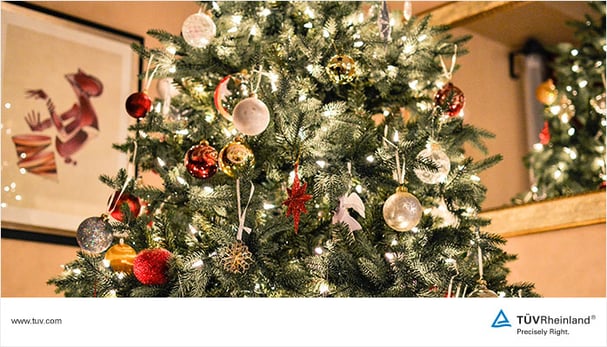A Christmas tree is part of the festive season in almost all households. In order to decorate it, the tree must stand stably. There are various stand systems on the market for bringing the tree into a vertical position – and keeping it there.
One very popular system, because it is particularly user-friendly and safe, is cable technology. “This fastens the tree inside a wire cable with clamps, for example using a foot pedal,” explains Wilhelm Sonntag, a product testing expert at TÜV Rheinland. A tree that is fastened in this way does not tip over as easily if children thoughtlessly pull on its branches, for example. Another practical feature: A water container with an integrated water level indicator shows whether the tree needs to be watered.
Look for test marks and workmanship
When buying a stand, it is important to look closely: “If a Christmas tree stand bears a test mark such as the GS mark, this shows that it has been tested for safety,” says Wilhelm Sonntag. Detailed information on the packaging and easily comprehensible instructions for use are also indications of a safe Christmas tree stand. In addition, it is a good idea to look at the display stands in the shop. Sharp corners and edges, cheap sheet metal or shaky design may be apparent immediately.
Ask others to help with adjustment
Old-fashioned stands with screw technology are not quite as user-friendly. Adjustment with wing screws not only requires a great deal of effort, but it also takes a long time before the tree is finally straight. If you already have a Christmas tree stand like this and don’t want to part from it for nostalgic reasons, you should muster helpers to hold the tree steady while you are putting it up. Or if you don’t have this option, you can take the stand along when you buy the tree. Many Christmas tree sellers will be happy to help you secure the tree trunk in the stand.
For more information on our product testing and certification solutions, please visit our website or contact us to speak to one of our experts.




